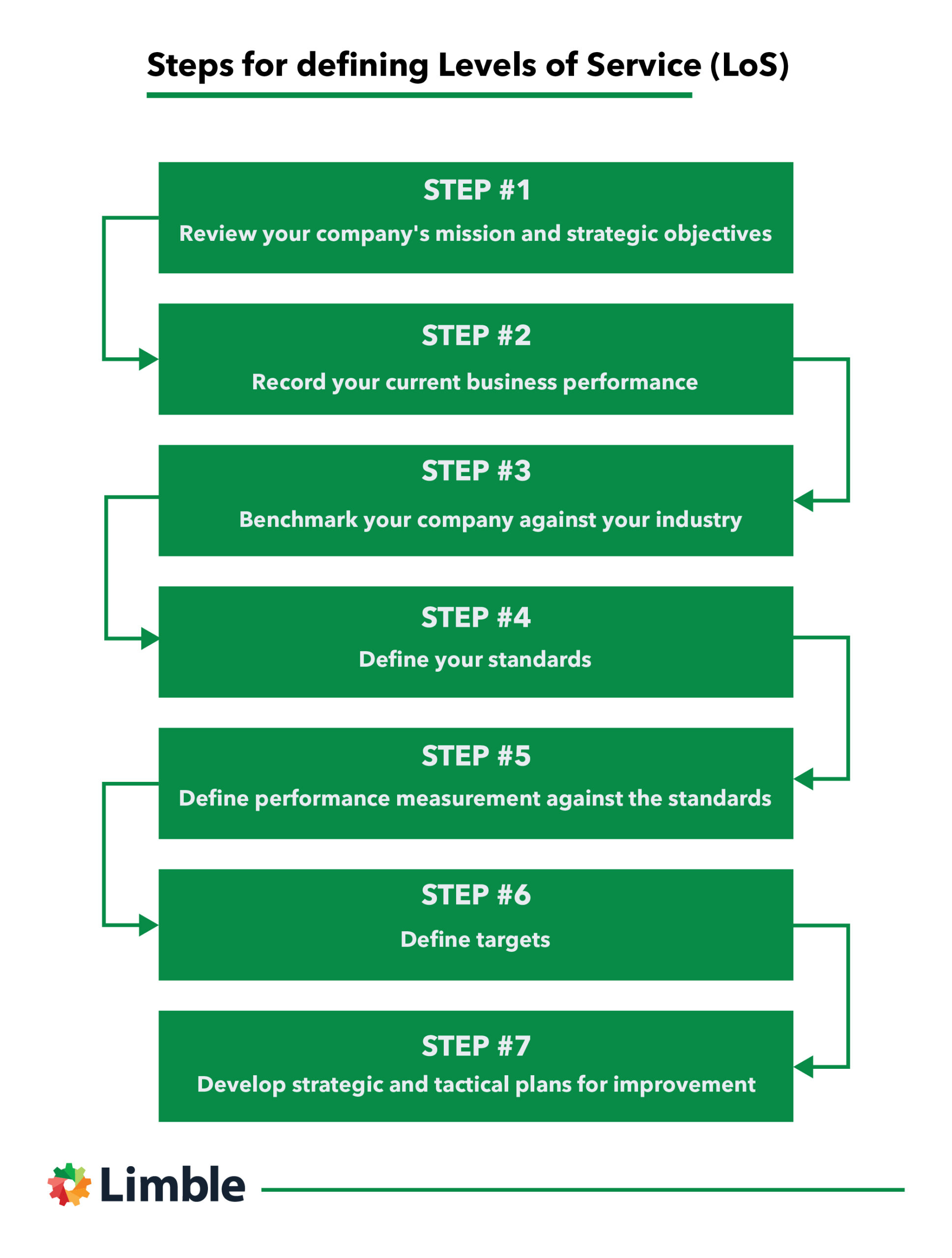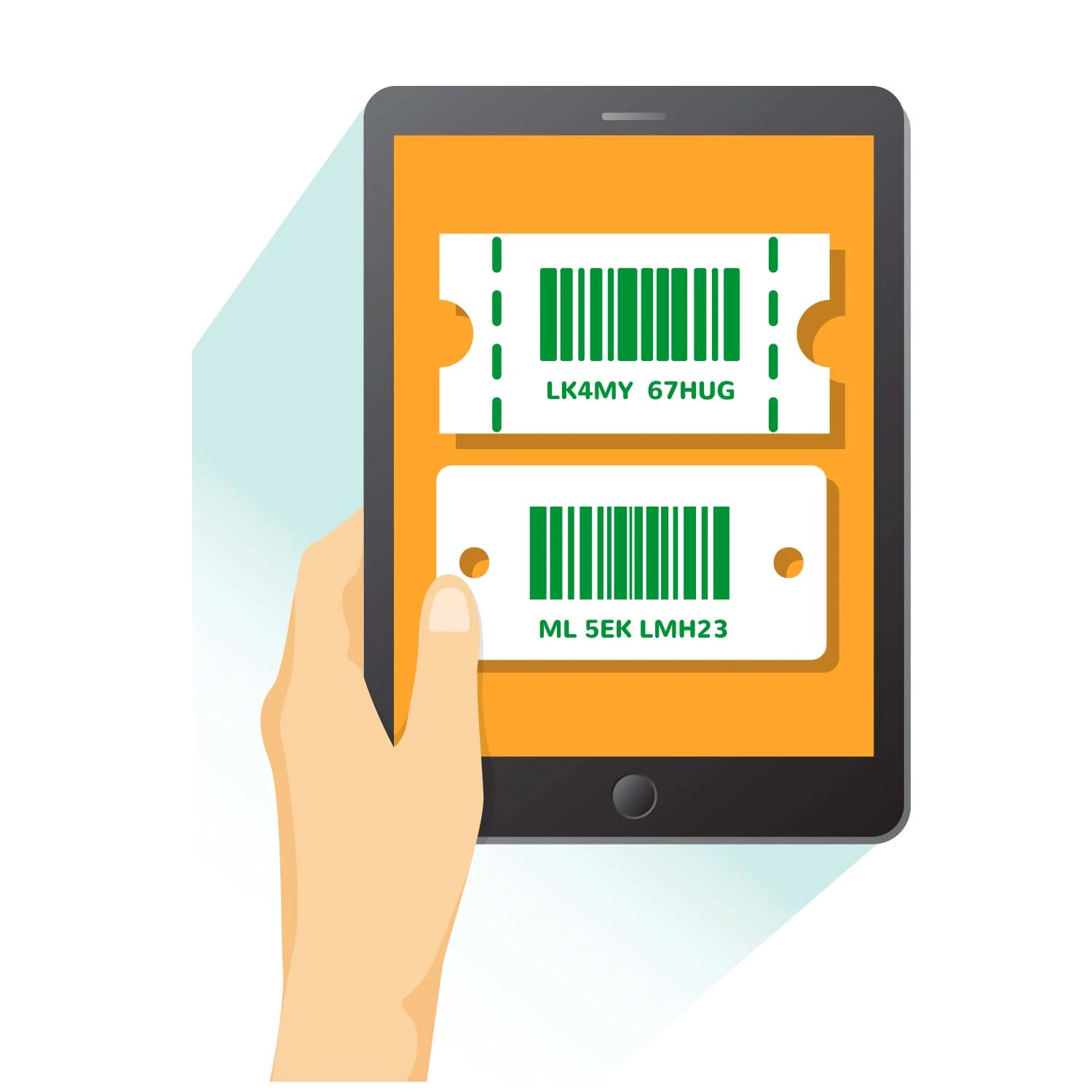Levels of Service (LoS)
Everything you ever needed to know about levels of service.
What does the term Level Of Service (LoS) refer to?
International Standard ISO 55000 provides the requirements, guidance, and terminology for organizations seeking to implement, maintain or improve an effective asset management system. Page 15 of the standard defines levels of service as:
…parameters, or combination of parameters, which reflect social, political, environmental and economic outcomes that the organization delivers.
A footnote to the definition states that these parameters might include metrics such as:
- Safety
- Customer expectations and satisfaction
- Quality
- Quantity
- Capacity
- Reliability
- Responsiveness
- Environmental acceptability
- Availability
- Cost
It’s worth noting here that nothing restricts Levels of Service to physical or tangible objects. Asset management encompasses “an item, thing, or entity with potential or actual value to an organization” which might be financial or non-financial, tangible or intangible assets.
To summarize those two definitions and the term, we can say that Levels of Service refer to the design and operation of your business to provide stakeholders, customers, and users with an optimum quality of service, neither under nor overdelivering.
The Essential Guide to CMMS
Download this helpful guide to everything a CMMS has to offer.

What industries use Levels of Service?
The Levels of Service concept is not new. Transportation industry was using it in the 1950s and ’60s for highway capacity planning. Today, many industries use the Levels of Service strategy to optimize their business.
Airline industry
The International Air Transport Association (IATA) has developed a service for members to provide an objective and unbiased analysis of their Levels of Service to optimize their airport resources.
Optimizing airport passenger flow requires balancing multiple needs, including regulatory compliance, safety, security, and passenger satisfaction. The IATA airport development reference manual directly results from the Levels of Service initiative.
Facilities management
Sodexo is a French food services and facilities management company with almost half a million employees across 80 countries. Their facilities management services use Levels of Service to define the optimum staffing levels that meet client quality and performance standards cost-effectively. The document also provides clear definitions of levels of service for audit purposes.
Highways maintenance
The US National Cooperative Highway Research Program implemented maintenance Levels of Service (and not just for infrastructure assets) to determine the level or condition at which they should initiate maintenance action.
The purpose was to maximize user benefits within the constraints of the available resources. The initiative identified the thresholds at which maintenance should occur based on considerations like safety, comfort, investment protection, environmental impact, and aesthetics.
Why go through the trouble of defining LoS?
Levels of Service are a natural extension of your company’s vision, mission, and value statements. They align your service delivery with your organizational goals and aspirations. They drive focus, transparency, and accountability throughout your organization:
- By highlighting the key aspects of your business and empirically defining them, you enable repeatable measurement through formal audit and informal observation. This allows you to track what you did, what occurred, and how stakeholders, clients, and users perceived your business. As you’ll often hear in the maintenance industry: you can’t improve what you can’t measure.
- Optimizing your business through defining Levels of Service ensures industry competitiveness, financial viability and assists with long-term capital expenditure management. You can extract the maximum value from your assets and their functionalities, ensuring no value is left upon disposal while preventing premature replacement that wastes capital and disrupts performance.
A clear definition of Levels of Service also enables the efficient delivery of the stakeholders’ requirements, including regulators, shareholders, employees, and customers. Relationships improve by meeting these diverse requirements, enhancing business efficiency and effectiveness.
Common criteria used to define Levels of Service
When defining the LoS for your organization, it’s easy to focus solely on client’s requirements as the guide for service definition. However, initial considerations must encompass all internal and external connections with your business. When you identify important stakeholders, it becomes much easier to isolate important metrics.
If you’re a maintenance department within a larger manufacturing organization, you will have several internal clients with performance expectations. You’ll also have external stakeholders with the power to make life difficult for your company.
Here are some stakeholders you may need to satisfy and the metrics you might choose to focus on:
- Your state and national laws mandate compliance on key issues, making regulators the key stakeholders. Safety is one, and disposal of liquid waste might be another metric to keep an eye on.
- Of all your internal clients, production is your reason for existence. Therefore, equipment downtime and your ratio of planned maintenance to reactive maintenance become key service metrics.
- Finance might value your management of inventory levels.
- Human resources will view your sickness metrics.
- Your maintenance technicians have a personal interest in the volume of after-hours call-outs.
Criteria will change based on your industry, but the concept stays the same. A fast food restaurant may focus on cleanliness metrics to satisfy regulatory and client needs. Customers will have an intense interest in queuing times and personal space per customer (both influencing customer experience), employees will value safety, and your finance people will be focused on controlling food waste.
Review all internal and external interfaces and consider the levels of service expected at each interface. Many will overlap, and some will rank lower in importance, but brainstorming will help uncover considerably more important criteria than just considering your obvious client and the minimum standards.
Defining Levels of Service in your business
There is a seven-step process you can follow to transform strategic goals into tactical and operational implementation plans. The process is a team-based exercise, requiring senior representation from all facets of the business.

Step #1: Review your company’s mission and strategic objectives
A mission statement is an action statement declaring the purpose of an organization, the customers it serves, and the value it delivers to those customers. If you don’t have a mission articulated for your business, it’s worth devising one to focus the minds of all employees on what and who is important.
Strategic objectives flow naturally from the mission statement. They are the link between a stated aspiration and its achievement by outlining the big goals, stating in broad terms where the company is now, what goal achievement looks like, how you intend to get there, and the deadline to do so.
When the team begins this first step, many questions and concerns will arise. The mission may appear misaligned with current reality, and objectives may be outdated. It’s the reason why this first step is so important, as it aligns your team behind the initiative while updating and optimizing the business strategy.
Step #2: Record your current business performance
This step requires an honest appraisal of your current performance when measured against your objectives. It’s important to dissect the levels of service currently delivered to understand whether they meet stakeholder expectations, whether you’ve excluded any party from your considerations, and whether you are overdelivering to any or all recipients of your outputs.
You are likely to find some areas of omission or poor performance. You’re also likely to find misalignment between your actions and the desired outcomes – initiatives that consume resources out of proportion to the value added. You should end up with a baseline that addresses four questions:
- Where are we underperforming?
- Where are we overperforming?
- What are we not doing?
- What are we doing unaligned with our purpose?
Step #3: Benchmark your company against your industry
A business doesn’t exist within a vacuum. It’s important to understand where you sit in relation to your competitors. Use industry benchmarks if they exist or measure client satisfaction to establish your current levels of service. Does that comparison correlate with the mission and objectives review from step one?
The IATA example we mentioned earlier allows airport operators to benchmark their aircraft and passenger-handling capabilities against other service providers. By broadening their focus away from just their company, they gain a more rounded appreciation of opportunities for service optimization, identifying ways to reach the expected levels at the same time.
Step #4: Define your standards
By now, you should understand where your business is within the industry, what you wish to achieve, what to focus on, and your chosen timeframe. Now is the time to establish the standards you intend to focus on to achieve your mission optimally.
Here, more is not always better. As the Pareto principle states, your focus on the right 20% of your business can gain you an 80% improvement in performance. You will want to take a more granular approach if you’ve got more than a dozen standards.
In our previous example of Sodexo, they identified eleven standards comprising customer, maintenance, and finance initiatives. They identified these standards are critical areas that will provide optimum performance, balance the different levels of customer service, your asset management plan, and financial returns.
Step #5: Define performance measurement against the standards
Defining the critical focus areas in the previous step is very important. However, if you have no means of objective measurement, how will you rank improvement or current state?
The Sodexo example (company offering facility management services) breaks out four levels of maintenance standards for each metric/stakeholder:

In other words, Sodexo has articulated comprehensive measures with a matrix showing the Y-axis standards and the X-axis rankings. At each intersection, a statement describes what achieving that level of standard looks like.
For instance, the standard of planned maintenance versus crisis management, achieving between 25% and 50% of planned maintenance tasks, places you at a level four, or reactive management. To get to level three, or managed care, you’d need to raise your planned maintenance completions to somewhere between 50% and 75%.
Remember to make the measurement clear when you devise your measures, with no room for subjectivity. If two different people used the measures to complete an audit, would they return the same or similar results?
Step #6: Define targets
In step two of this process, you defined your current performance. Now is the time to identify where your company sits on each of the standards you defined at step four.
With that identified, you can nominate the level you wish to achieve on each standard, giving you a starting point, where you need to get to, and the measure that will indicate your progress and achievement. It’s this target definition that will guide you in the next step.
Step #7: Develop strategic and tactical plans for improvement
At this point, you’ll already have some understanding of the plans you need to implement to align your business with the desired Levels of Service.
Returning to the Sodexo example, they’ve provided their managers with examples of the tasks and frequencies required to achieve each level. They’ve also identified optimal staffing numbers per area, per acre.
Your plans will be different, but each should be clear in the expected outcome, the actions to be implemented, and the timeframe within which the actions should occur.
The remaining steps will be implementing the plans, tracking the results through audit and analysis, and making any necessary adjustments to fine-tune the outcomes.
Want to see Limble in action? Get started for free today!
Things to remember
Defining Levels of Service requires a mix of qualitative and quantitative data, emphasizing the latter where possible. Aligned with your mission and objectives, they ensure a root and branch understanding of those areas that will return optimal business performance.
Once you’ve designed the strategic and tactical plans, operational implementation becomes simpler. Drafting Service Level Agreements (SLA) that you can supply to clients or require from suppliers will align with and support your goals based on data and analysis. Similarly, requests for capital expenditure and justification for plant modification become less subjective.
The work you’ve done on defining your Levels of Service will ensure you’re spending effort and resources on the things that probably support your mission. Your financial results, stakeholders, employees, and clients will thank you for it.


